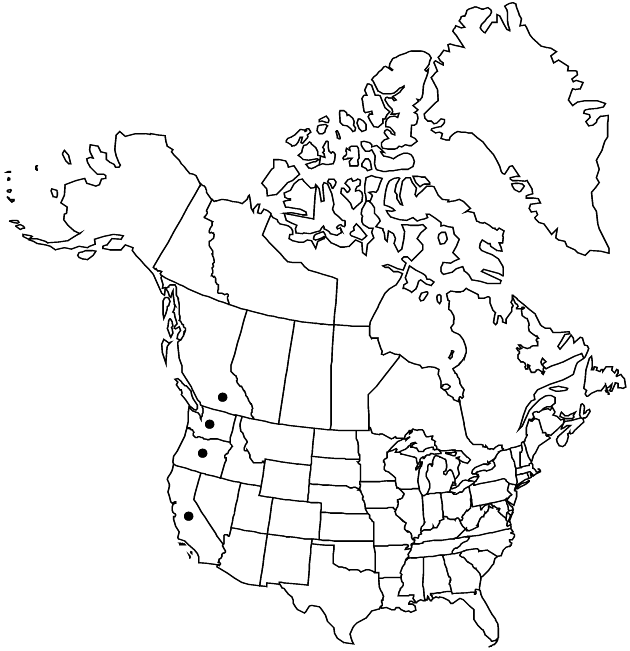Packera macounii
Phytologia 49: 47. 1981.
Perennials, 30–40+ cm; taprooted (caudices ± branched, becoming rhizomiform). Stems 1, sparsely to densely tomentose or glabrescent. Basal leaves (and proximal) petiolate; blades lanceolate to oblanceolate, 30–50+ × 10–20 mm, bases tapering, margins entire or shallowly toothed (slightly revolute). Cauline leaves gradually reduced (distal sessile, bractlike). Heads 6–15+ in corymbiform arrays. Peduncles inconspicuously bracteate or ebracteate, sparsely tomentose to glabrate. Calyculi 0 or inconspicuous. Phyllaries 13 or 21, green, 5–7+ mm, glabrous. Ray florets 8(–13); corolla laminae 8–10+ mm. Disc florets 30–40+; corolla tubes 2.5–3.5 mm, limbs 2–3 mm. Cypselae 1.5–2 mm, glabrous; pappi 4–5 mm. 2n = 46, 92.
Phenology: Flowering early May–early Jul.
Habitat: Along streams, roadsides, clearings, disturbed sites, rocky soils, coniferous woodlands
Elevation: 400–1400 m
Distribution

B.C., Calif., Oreg., Wash.
Discussion
Packera macounii is similar in overall morphology to P. cana. Leaves of P. macounii are narrower and frequently revolute. It is often cited as being collected on serpentine soils; it is not restricted to them. Senecio fastigiatus Nuttall (1840) is a later homonym of S. fastigiatus Schweinitz ex Elliott (1823), a name of uncertain application.
Selected References
None.